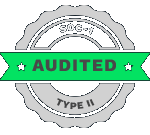An employee from the IT department comes running to his boss – “sir, we have suffered major cyber risks and most of our sensitive data and other classified information are at great risk. What should we do?”
Quite a nightmare for every CXO.
Well, that’s just the tip of the iceberg.
Serverless SaaS (Software as a service) has been experiencing quite a steady rise in 2025.
Table of Contents:
With its ability to deliver cost-effective, efficient, and scalable solutions for your business, AWS serverless SaaS lets developers concentrate on coding as per business logic whereas the cloud providers manage infrastructure management, leading to quicker development cycles. There are many US-based enterprises that are adopting multi-tenant architecture apps that are developed with less code.
Serverless SaaS comes with loads of features that are an efficient means towards tackling server issues.
Better efficiency and scalability: The architecture of serverless SaaS allows them to automatically scale resources according to the demand while ensuring optimal performance and cost efficiency.
Decreased operational expenses: The serverless platforms only charge for the actual time taken for computing. This leads to significant savings since you must pay for the actual work done and not for the entire process. It’s a smart choice for applications that tend to have varying workload.
Increased productivity of developers: Since serverless architecture streamlines the overall development process by managing infrastructure concerns, this allows developers to manage improving the code quality and application logic.
Faster time-to-market: Serverless architecture facilitates quicker cycles of development and deployment, enabling businesses to launch new features and updates at a much faster pace.
Growth of ecosystem: With serverless architecture, there has been significant growth in new platforms, tools, and frameworks, aimed at enhancing both development and deployment.
Hybrid & multi-cloud strategies: Businesses can employ multi-cloud strategies for using the best of available serverless technologies and platforms while ignoring vendor lock-in.
Understanding Serverless SaaS Architecture
The serverless SaaS architecture clubs the benefits of serverless computing with those of SaaS model. This unique combination allows developers to develop and deploy applications. And that too without managing servers while providing software as a service to the end-users.

This architecture makes use of the managed services such as AWS Lambda, provided by cloud providers to manage, scale, and maintain the infrastructure. This allows AWS serverless SaaS providers to concentrate on developing applications and delivering them to the clients/customers.
Recommended Reading:
Tenancy Patterns Explained – Silo, Pool, and Bridge
The boss now wishes to know about the term “tenancy pattern” which he heard from one of his IT employees.
Tenancy pattern, in a SaaS architecture, is used for identifying various customers that share resources. These customers are referred to as tenants, hence the term tenancy pattern.
There are 3 major patterns
Silo offers, technically, the highest isolation via the dedicated resources for every tenant.
Pool provides the most efficient way of sharing resources.
Bridge, just as the name indicates, combines both the elements of Pool & Silo for catering a balance between isolation and resource allocation.
| Model | Features |
|---|---|
| Silo | Dedicated infrastructure and other resources for every tenant (customer). Offers the highest level of security, isolation, and performance predictability. Consider it like every single customer has his/her own apartment with all the best facilities. |
| Pool | Tenants share the same infrastructure and other resources. Offers easy in management, efficient, proper resource utilization, and cost-effectiveness. Think of it as a shared vehicle or lodging facility where more than 1 person is living together while sharing the same resources. |
| Bridge | Acts as a hybrid model by combining both the Silo & Pool elements. Gives a well-balanced isolation and cost-effectiveness, allowing customized resource allocation. |
Top Serverless Platforms
There are many prominent serverless platforms that are widely utilized in developing different Software as a Service (SaaS) application, each one offering distinct advantages:
AWS Lambda
AWS Lambda is a serverless compute service that runs code without provisioning or managing servers. It auto-scales, handles operations, and integrates seamlessly with services like DynamoDB, API Gateway, and S3—making it ideal for building serverless backends.
Vercel
Vercel is a platform for front-end developers to deploy and scale modern web apps, especially with Next.js. It runs backend code serverlessly, supports multiple languages, and provides a global CDN, auto-deployment, and integrated logging.
Firebase
Firebase, Google’s mobile and web app development platform, offers fully managed backend services like cloud functions, authentication, and analytics. Its serverless functions extend capabilities, making it ideal for mobile-first and SaaS applications.
Other notable serverless platforms for AWS serverless SaaS include Google Cloud Functions, Microsoft Azure Functions, and Netlify Functions, each with its own strengths and integrations within its respective cloud ecosystem.
Database Options for Serverless SaaS
Among the different database options for the AWS serverless SaaS, PlanetScale, Neon, and Supabase are quite prominent options frequently considered for the serverless SaaS applications, each offering a separate set of advantages:
PlanetScale
Designed for massive scalability and high availability, PlanetScale is a serverless MySQL-compatible database designed on Vitess. The major features of PlanetScale include database branching to facilitate efficient development workflows, automatic sharing, and horizontal scaling without application-level changes.
Neon
This database option for Serverless SaaS offers a serverless PostgreSQL database along with a robust focus on developer experience and cost efficiency. It offers features like database branching, instant provisioning, and a unique architecture that separates storage and compute, allowing for rapid scaling and cost optimization by pausing compute when not in use.
Supabase
As an open-source Firebase alternative, Supabase caters for a comprehensive backend-as-a-service (BaaS) built around PostgreSQL. Even though its core is a serverless Postgres database, Supabase also comprises features such as storage, authentication, and real-time subscriptions.
Building a Serverless Feature-Flag Service
A serverless feature-flag service enables dynamic control of application features without extra coding or SaaS infrastructure management. It supports faster releases, automatic scaling, lower overhead, and secure deployments, while allowing instant rollbacks to reduce risk and improve user segmentation.
Conclusion: The Future of AI CRM Integration
In 2025, the key CXO takeaway for Serverless SaaS is that it has become a foundational strategy for building scalable, cost-effective, and responsive applications, offering significant advantages in speed, agility, and innovation.
It’s expected that by 2030, the overall market for Serverless SaaS is expected to grow substantially and steadily with a market size of $55 billion dollars.
While challenges remain, advancements in tooling, cost optimization, and multi-cloud capabilities are making serverless more accessible and attractive for SaaS businesses.
FAQs
What is Serverless SaaS architecture?Serverless SaaS architecture combines serverless computing with multi-tenant design to let you build and run scalable SaaS apps without managing infrastructure. Services like AWS Lambda handle computation automatically, reducing costs and operational overhead.
What are the main multi-tenancy patterns?The three key patterns are: Silo where each tenant gets isolated resources; Pool: where all tenants share the same infrastructure and database; and Bridge that acts as a hybrid model, sharing some resources while keeping others isolated. Each offers trade-offs in cost, security, and scalability.
Which platforms are best for serverless SaaS in 2025?Popular choices include AWS Lambda for flexibility, Vercel for frontend/serverless integration, and Firebase for real-time apps with built-in backend services.
What databases work best with serverless SaaS?Top picks are PlanetScale (scalable MySQL), Neon (serverless Postgres), and Supabase (Postgres with authentication, storage, and APIs). The choice depends on workload and integration needs.
Can you give an example of a serverless SaaS use case?A feature-flag service is a great example—allowing dynamic feature toggling for multiple tenants without redeploying code, built using AWS Lambda and a serverless database for cost efficiency and speed.












 AI SaaS Solutions for Operational Excellence and Business Efficiency
AI SaaS Solutions for Operational Excellence and Business Efficiency  AI SaaS RAG Workflows: Smarter Knowledge Retrieval for CXOs
AI SaaS RAG Workflows: Smarter Knowledge Retrieval for CXOs  OpenAI SaaS integration – A Quick Guide for CXOs
OpenAI SaaS integration – A Quick Guide for CXOs  SaaS Security 2025: How to Stay Ahead of AI-Powered Threats
SaaS Security 2025: How to Stay Ahead of AI-Powered Threats 
